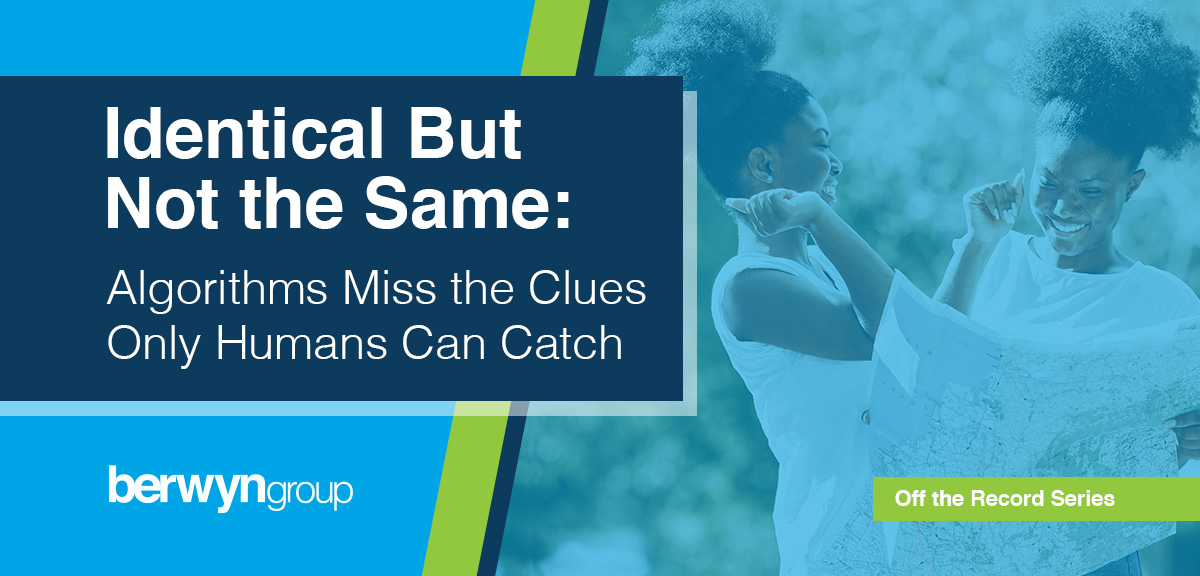Background
At The Berwyn Group, we often encounter near-identical records that challenge even the most sophisticated death audit processes. One recurring challenge is distinguishing between twins who share not only birthdates, but also strikingly similar names and life histories.
Recently, our team encountered several such cases where death records initially appeared to match living individuals. Without Berwyn's expert validation process, these matches could have led to false positives – wrongfully terminating benefits for living participants.
The Twin Conundrum
In a short span, our data flagged multiple potential matches where deceased individuals had living twins whose records were dangerously close in every measurable way:
- Cleveland and Leveland
- Joyce and Cloyce
- Berlon and Verlon
- Ronald and Donald
Each pair shared not just names that were one letter apart (B & V are dangerously close on a keyboard, and one may assume an improper keystroke during data entry), but also near-identical Social Security Numbers and overlapping address histories. To automated systems, these would appear as matches – clear-cut indicators of death.
The Risk of False Positives
Had these cases been processed by a provider relying solely on fuzzy matching, the outcome could have been disastrous:
- Benefits would have been shut off for living participants.
- Clients would have faced compliance issues and potential legal disputes.
- Reputational damage and administrative costs to reverse the errors would follow.
How Berwyn Got It Right
Rather than accept the matches at face value, Berwyn's validation team initiated deep-dive investigations into each case. Through meticulous review of obituaries, cemetery records, public documents, and even image verification, our team identified key differentiators confirming that the living twins were, indeed, alive and well.
For instance, in one case, a gravestone image revealed an inscription that read "Twin 1", helping our experts piece together the true identity of the deceased without misidentifying their sibling.
The Outcome
All four twin cases—Cleveland/Leveland, Joyce/Cloyce, Berlon/Verlon, and Ronald/Donald—were correctly rejected as false matches. Thanks to Berwyn's human-validated process:
- No false positives were reported to clients.
- Benefit payments remained uninterrupted for the living twins.
- Clients avoided potential financial, legal, and reputational repercussions.
Why This Matters
This isn't just a rare occurrence. As data grows more complex and similar-name populations expand, these edge cases will continue to surface. Providers relying solely on algorithmic matches are playing a dangerous game with participants' livelihoods.
Berwyn's expert human validation ensures that clients receive accurate results—not assumptions.



